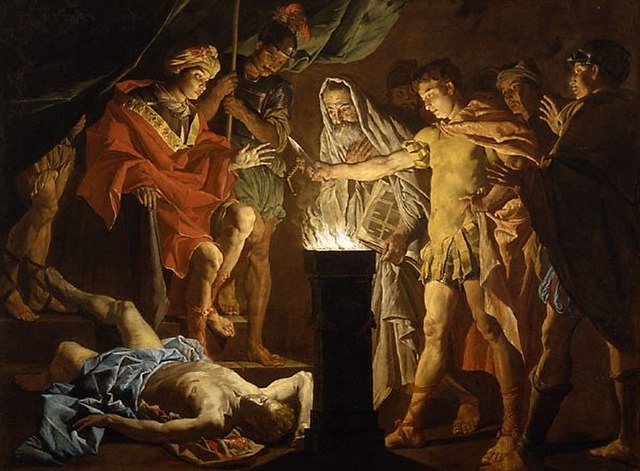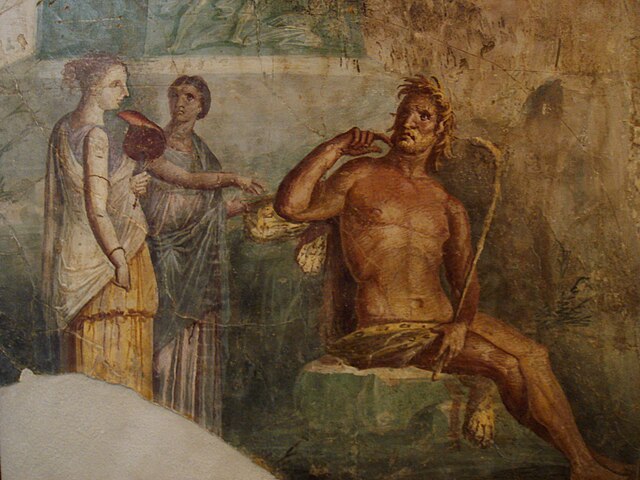Venus is a Roman goddess, whose functions encompass love, beauty, desire, sex, fertility, prosperity, and victory. In Roman mythology, she was the ancestor of the Roman people through her son, Aeneas, who survived the fall of Troy and fled to Italy. Julius Caesar claimed her as his ancestor. Venus was central to many religious festivals, and was revered in Roman religion under numerous cult titles.
Venus rising from the sea, alluding to the birth-myth of Greek Aphrodite. From a garden wall at the Casa della Venere in conchiglia, Pompeii. Before AD 79
A 2nd- or 3rd-century bronze figurine of Venus, in the collection of the Museum of Fine Arts of Lyon
Venus and Mars, with Cupid attending, in a wall painting from Pompeii
Imperial image of Venus suggesting influence from Syria or Palestine, or from the cult of Isis
Roman mythology is the body of myths of ancient Rome as represented in the literature and visual arts of the Romans. One of a wide variety of genres of Roman folklore, Roman mythology may also refer to the modern study of these representations, and to the subject matter as represented in the literature and art of other cultures in any period. Roman mythology draws from the mythology of the Italic peoples and ultimately from Proto-Indo-European mythology.
Romulus and Remus, the Lupercal, Father Tiber, and the Palatine on a relief from a pedestal dating to the reign of Trajan (AD 98–117)
In this wall painting from Pompeii, Venus looks on while the physician Iapyx tends to the wound of her son, Aeneas; the tearful boy is her grandson Ascanius, also known as Iulus, legendary ancestor[citation needed] of Julius Caesar and the Julio-Claudian dynasty
Mucius Scaevola in the Presence of Lars Porsenna (early 1640s) by Matthias Stom
Polyphemus hears of the arrival of Galatea; ancient Roman fresco painted in the "Fourth Style" of Pompeii (45–79 AD)








